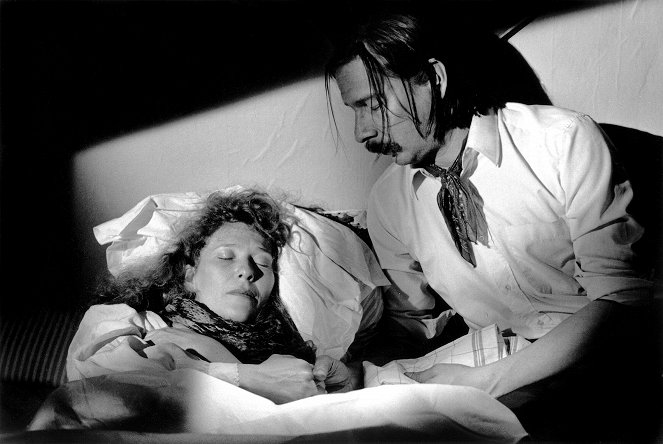Regie:
Aki KaurismäkiDrehbuch:
Aki KaurismäkiKamera:
Timo SalminenBesetzung:
Matti Pellonpää, Evelyne Didi, André Wilms, Kari Väänänen, Christine Murillo, Jean-Pierre Léaud, Carlos Salgado, Alexis Nitzer, Sylvie Van den Elsen (mehr)Inhalte(1)
Rodolfo, ein albanischer Flüchtling und Maler, Marcel, ein französischer Dichter, und Schaunard, ein irischer Komponist. Künstler in jeder Hinsicht, lernen einander zufällig auf demselben Schlachtfeld kennen. Sie jagen dieselbe Beute, genannt Fünffrancstück. Keine zehn Schritte können sie gehen, ohne einem Bekannten zu begegnen oder auf einen Gläubiger zu stoßen. Haben sie einmal Geld in der Tasche, dann trinken sie vom Besten und Ältesten und finden nie genug Fenster, um ihr Geld hinauszuwerfen. Und es gibt noch Mimi und Musette, zwei in der Großstadt verlorene Schönheit vom Lande. (Verleiher-Text)
(mehr)Kritiken (5)
Ein stolzes, aber schmerzhaftes Elend. Mitleid und Eitelkeit. Eine wunderschöne Rhapsodie über arme "Künstler", deren größte Kunst das Leben selbst ist - höflich, bedingungslos, feierlich in jedem Takt. Wahrscheinlich Kaurismäkis tragischster Film (wenn man mal von Le Havre aus dem letzten Jahr absieht) und zugleich einer seiner Regie-Höhepunkte.
()
My first encounter with Aki Kaurismäki and right off the bat, one of his most difficult movies. It was amazing to watch the emotions and actions of those French bohemians. One might think that they’re nuts. So what, they really are nuts. Eventually, fate catches up with them and at that point, it doesn’t even matter how careless they are about the world around them. I must also applaud the amazing black-and-white atmosphere of the Parisian streets. It was a joy to watch them and it helped shape the atmosphere a lot… obviously.
()
Did Malevich's "Black Square" deal a deadly blow to painting as such and does the painter Rodolfo admit it? And yet he still continues to paint? This is called a love for creation as such, a love that all the main characters have more than enough of. However, it does not mean that there is no longer any room for human love. It can only be torn from a life in timelessness when the surrounding world speaks up, in the form of money, from which (unfortunately) artists must draw their livelihood. A funny, melancholic, and at the end bittersweet glimpse into the lives of three men who could have lived both 150 years ago and yesterday.
()
The main reason I like Aki Kaurismäki's film is that the visuals he used are a perfect match for the story presented. Black and white cinematography doesn't suit every film nowadays, but if an author decides to use it, they usually have a good reason for it. Aki Kaurismäki knew this and it makes the film nice to watch. Plot-wise, it may not necessarily be captivating.
()
I like Kaurismäki's melancholic comedies set in an urban environment and shot in black and white. However, Aki's penchant for melodramatic tragedy with increasingly swelling sentiment is a big problem for me. In The Bohemian Life, you can find both - I value the first half more, where the comedic elements are more prevalent. The second half wants to be moving. I must note that I have always had a distant attitude towards bohemians. I considered them pleasure-seeking and hypocritical. No matter how alternative they appeared, they were dependent on the bourgeois surroundings that sustained and protected them. The film can be regarded as a tribute to the artistic environment of which Kaurismäki was a part. And it is also an expression of respect for his partner, Paula Oinonen, who is the author of the paintings by the painter Rodolf. For me, the director's work with the environment is probably the most interesting aspect. His selection of interiors and exteriors allows for creating an illusion of timelessness and connecting 19th-century Paris with the modern era. For a moment, you feel like you are walking the streets of the 1930s with the typical characters of the Parisian outskirts and then suddenly stop on the sidewalk next to a modern car. Overall impression: 75%.
()


Werbung